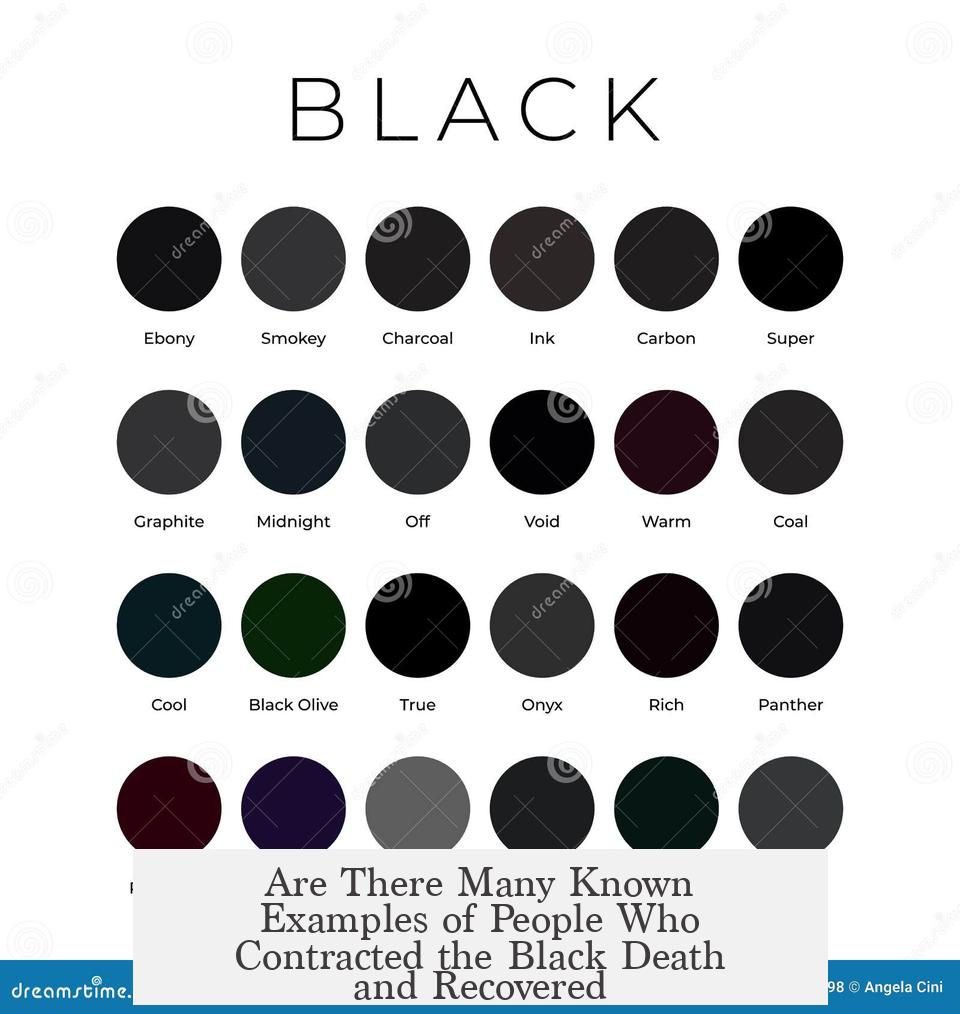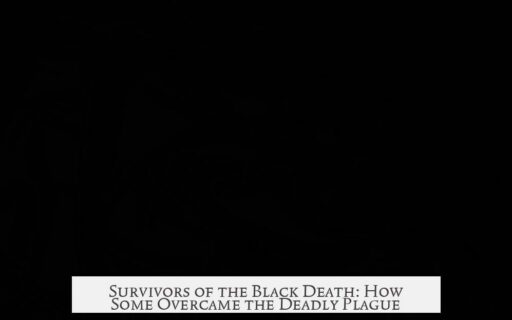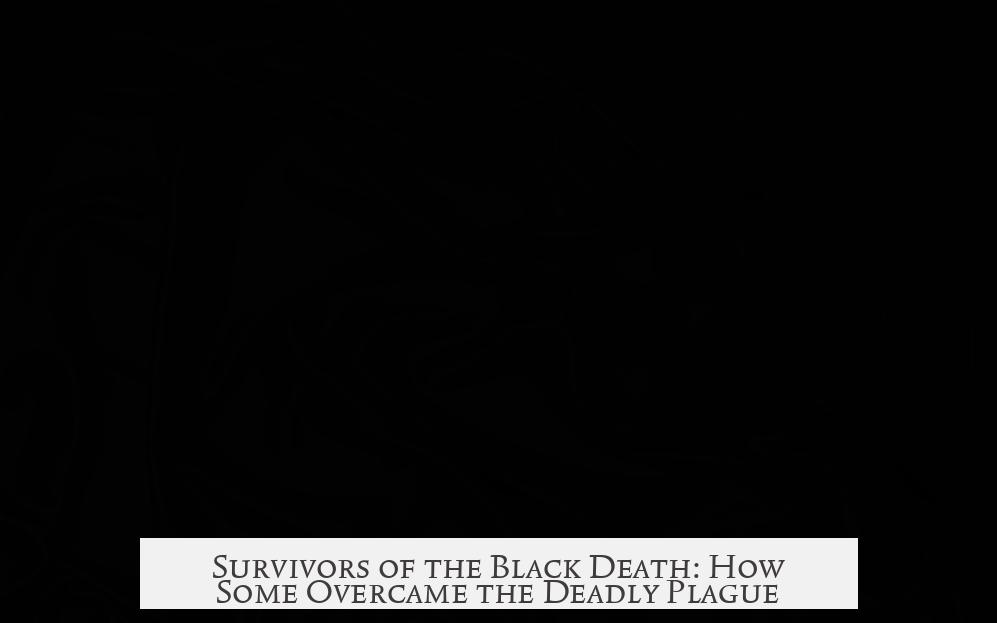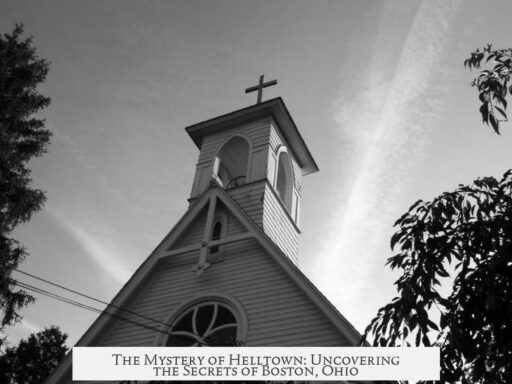Yes, many people contracted the Black Death and survived. The mortality rate for Yersinia pestis, the bacteria causing the Black Death, hovered around 80%. This means roughly 20% of those infected recovered. During the initial outbreak from 1346 to 1353, about 75% of Europe’s population caught the disease, and approximately 60% of the pre-pandemic population died. Consequently, around 15% of the total population, or 37.5% of survivors, experienced the disease and lived through it.

The lethality was not uniform across Europe or among individuals. Factors like region, age, and sex influenced survival rates. Additionally, the form of plague affected outcomes. The disease presented mainly as bubonic, pneumonic, or septicemic plague, each with different fatality rates. For instance, pneumonic plague tended to be more deadly than bubonic.
Historical records give insight into survivor experiences. Nicole Archambeau’s research examines 14th-century testimonies from Provence, where people recounted their encounters with the plague during inquests in 1363. Many who contracted the plague in subsequent waves after 1348 described it as less catastrophic personally, although emotional distress persisted. Survivors discussed various healing attempts and the care they received, emphasizing strong emotions linked to survival. Interestingly, hopelessness and the belief that plague was always incurable were less common than popular portrayals suggest.

The scale of survivors implies a significant portion of Europe’s medieval population developed some level of immunity or resilience. These survivors’ stories help historians understand the human and social impact of the pandemic beyond death counts. For deeper study, works like Ole Jørgen Benedictow’s The Complete History of the Black Death provide detailed historical and epidemiological analysis.
- Approximately 20% of infected people survived the Black Death.
- Survival chances varied by plague type, age, sex, and location.
- Survivor testimonials describe emotional struggles and healing efforts.
- Hopelessness was less widespread among survivors than often assumed.
- Approximately 37.5% of survivors contracted and recovered from the plague.
Are There Many Known Examples of People Who Contracted the Black Death and Recovered?

Yes, there are many known examples of people who contracted the Black Death and recovered. While the plague was notorious for its devastating kill rate, the story doesn’t end in pure doom and gloom for every infected soul. The bacterium Yersinia pestis (YP) was merciless—killing roughly 80% of those it infected during the 14th century pandemic. Still, that leaves a significant minority who fought the infection and lived to tell the tale.
Why does this matter? It’s easy to imagine that everyone who met the Black Death perished instantly, but history paints a more nuanced picture. Approximately three-quarters of Europe’s population contracted the plague between 1346 and 1353. Of those, an estimated 60% of the entire population died. Doing a little math, about 15% of Europe’s pre-plague population survived after catching YP. Put another way, roughly 37.5% of the people who survived the pandemic had actually battled and beaten the Black Death.

Understanding the Survivors’ Side of the Story
The idea that someone could survive this fearsome illness provides a fascinating glimpse into human resilience during centuries past. But survival was far from guaranteed and varied a lot depending on many factors.

- Regional Differences: The severity of the plague’s fatality rate differed across Europe. Some areas saw higher death rates, others less so.
- Demographic Factors: Age and sex played roles in determining who had better or worse odds of survival. Details are scarce, but these patterns show the infection wasn’t a “one-size-fits-all” killer.
- Symptom Profiles: YP presented in three primary forms—bubonic, pneumonic, and septicemic plague—with varying lethality. Bubonic plague was most common, with swollen lymph nodes (“buboes”), while pneumonic was the deadliest due to lung infection. Survivors likely fared better if hit with the bubonic form than the septicemic.
Running into the Black Death meant facing different probabilities depending on when, where, and how the bacterium manifested.
Historical Accounts of Survivors: What Did It Feel Like?

We’re lucky to have some records that shed light on how those who survived experienced the plague. Nicole Archambeau’s research dives into testimony from the 14th century, drawn from a fascinating source: the 1363 canonisation inquest of Delphine de Puimchel in Provence. Here, survivors shared their stories of suffering and healing during the 1348 and 1361 outbreaks.
Interestingly, many people who spoke during the inquest about the initial 1348 outbreak did not report having contracted the plague—at least not with typical symptoms. By 1361, more witnesses claimed to have suffered but noted that this later epidemic wasn’t as deadly or life-altering.
Survivor testimonials reveal a complex emotional landscape. They spoke of efforts to seek cures, receive care, and the strong feelings stirred by surviving an illness so deadly. One witness even described post-epidemic emotional distress, somewhat like a 14th-century version of post-traumatic stress!
Contrary to some grim literature, feelings of hopelessness were not universal. The idea that plague victims abandoned friends and family in despair seems more a literary trope than everyday reality for these survivors. Many clung to hope and the belief that healing was possible, even amid widespread tragedy.
Why Did Some Survive?
Historians and epidemiologists believe that certain individuals’ immunity or genetic factors might have offered resistance. Others might have encountered a milder form of the infection. Nutritional status, living conditions, and social support also contributed to better odds. Unfortunately, detailed medical records don’t exist to paint a full picture, but modern studies on plague survivors of later outbreaks provide clues.
Moreover, the differing forms of plague had a big impact. Bubonic plague kills about 50-60% without treatment, but septicemic and pneumonic forms were almost always fatal. Those who dodged the deadlier forms had a better chance.
Lessons From the Past: Why Survivor Stories Matter Today
It’s easy to think of the Black Death just as a horror story about mass death. But knowing many contracted the plague and recovered changes the narrative. It highlights human resilience and the complex interaction of biology, environment, and social factors in disease outcomes.
For modern readers, especially during times of global health scares, these stories offer perspective. Survival is not guaranteed, but it is possible—even in the face of terrifying diseases. Plus, understanding survivors’ experiences humanizes history and connects us with people living through their own pandemics centuries ago.
If you want to dive deeper, check out The Complete History of the Black Death by Ole Jørgen Benedictow. It’s a treasure trove of scholarly research and carefully documented analysis.
In Summary
- Approximately 15% of Europe’s population in the mid-1300s caught the Black Death and lived.
- Survival odds depended on location, age, sex, form of plague, and other factors.
- Historical testimonies reveal survivors experienced emotional challenges and hope.
- The plague’s human impact is complex—not just a story of death but also resilience.
The next time you think of the Black Death, remember: behind the staggering death toll were tens of millions who survived. Their stories teach us that even the darkest hours of history hold threads of hope and courage.




